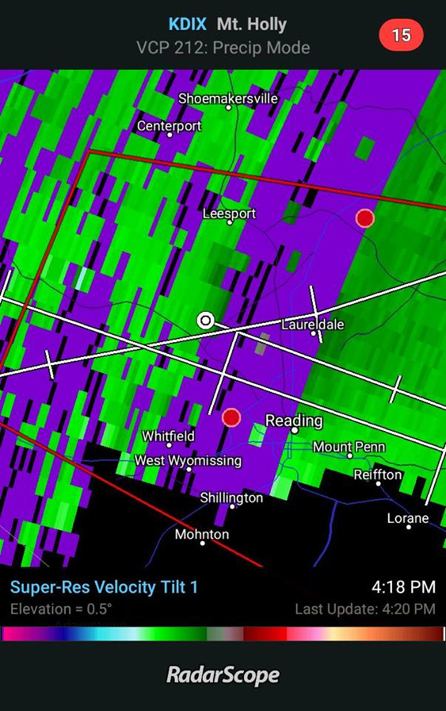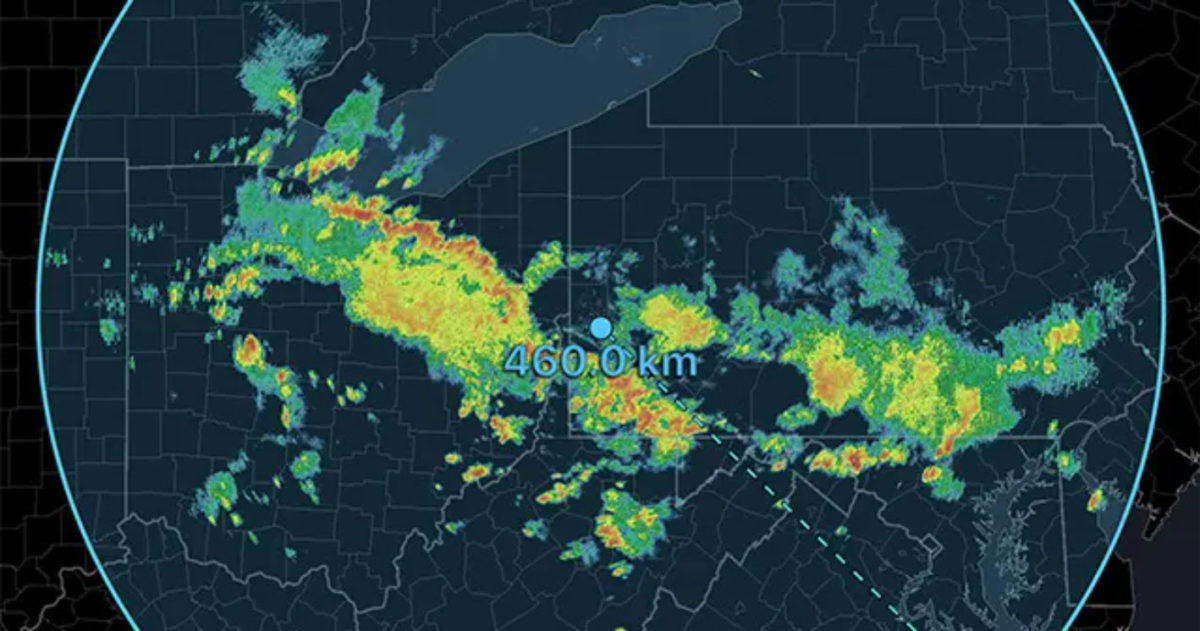Interpreting velocity data can provide its own set of challenges at times. One of these challenges is called range folding. In RadarScope, range folded velocities are displayed in purple.

Range folded pixels are essentially bad velocity data. Weather radars work by sending out a pulse of energy and waiting for a return off of targets (rain, hail, bugs, etc.). So, a radar sends out a pulse of energy and then listens for it to return before sending the next pulse. By measuring the time it takes for the echo to return, the radar can detect the distance of that object. This is called Pulse Repetition Time (PRT) and the number of pulses in a unit time is the Pulse Repetition Frequency (PRF).
WSR-88D radars can clearly see out to 230km. If the radar pulse goes beyond this distance and bounces back off a target, it can return after another pulse has already been sent out. Range folding occurs when the radar receives the pulse of energy back at the wrong time, incorrectly detects the distance, and plots it in the wrong location over good data. When velocities are folded, it can be difficult, if not impossible to determine aspects that may be important in observing storm structure.
{{cta(‘7adc9887-5a2e-4a2c-90de-3d3a733f8912′,’justifycenter’)}}








